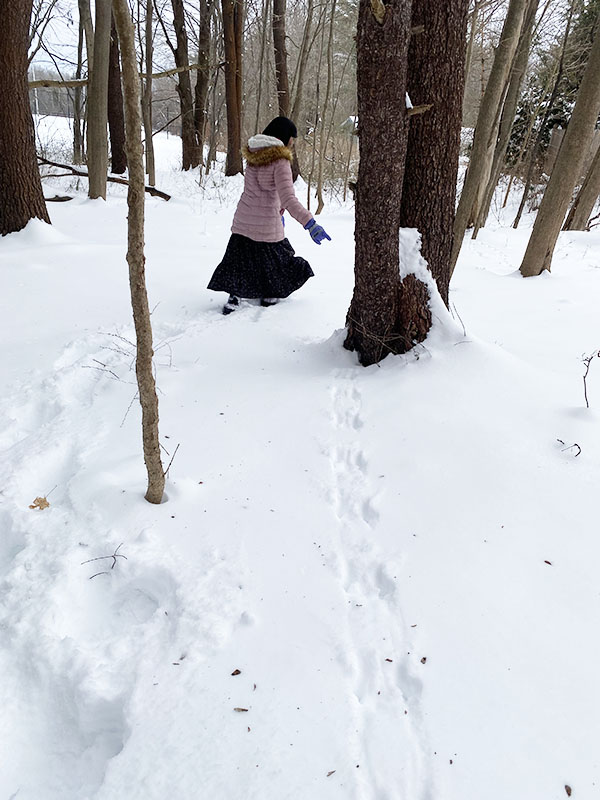SNOW! It’s great for snowballs and sledding. It also presents a whole other way for exploring the outdoors and learning about Maine wildlife in the winter.
While it may feel challenging to observe wildlife in winter, leafless trees and snow provide ample opportunities for spotting birds, evidence of wildlife, and active critters skittering amongst the trees. Maine Audubon educators are taking time this winter to introduce students to all those opportunities, by hosting school groups at our centers and by going to schools to explore habitat in their schoolyards.
Student groups visiting Gilsland Farm begin their visits by learning about the different wildlife strategies for surviving the cold winter months: migration, hibernation, dormancy, and remaining active. Do you know which three mammals in Maine are the only true hibernators? Woodchucks, Little Brown Bats, and jumping mice. Other mammals like skunks, raccoons, porcupines, and chipmunks are dormant; though they sleep through much of winter, they forage when able and their metabolic state alters only slightly.
![]()
When students venture outside, the forest is abundant with evidence of animal activity. Discovering squirrel nests, tracks, tree cavities and hollows, scat, squirrel middens of excavated acorns, dark holes leading into dens, and mice tunnels all spark joy and excitement in students.
At the East End Community School in Portland, students with the after-school program LearningWorks followed tracks and droppings around their schoolyard the day after a storm. Students eagerly chased the tracks alongside buildings, past playground equipment, through shrubs and small trees, across a field, and eventually through the chain link fence surrounding the property. On the other side of the fence students traced the tracks to a den; we wondered if it might be a Cottontail Rabbit!

LearningWorks participants at Talbot Elementary in Portland also looked for tracks in the woods behind their school, after learning about some of the remarkable ways that active wildlife adapt to survive winter. Changing diet, storing energy, growing thicker coats, fluffing feathers, and changing color to camouflage with the snow are all impressive adaptations employed by Maine wildlife this time of year.
It’s February and there’s plenty of winter left, so head outside to see, hear and smell whatever signs of wildlife you can!
